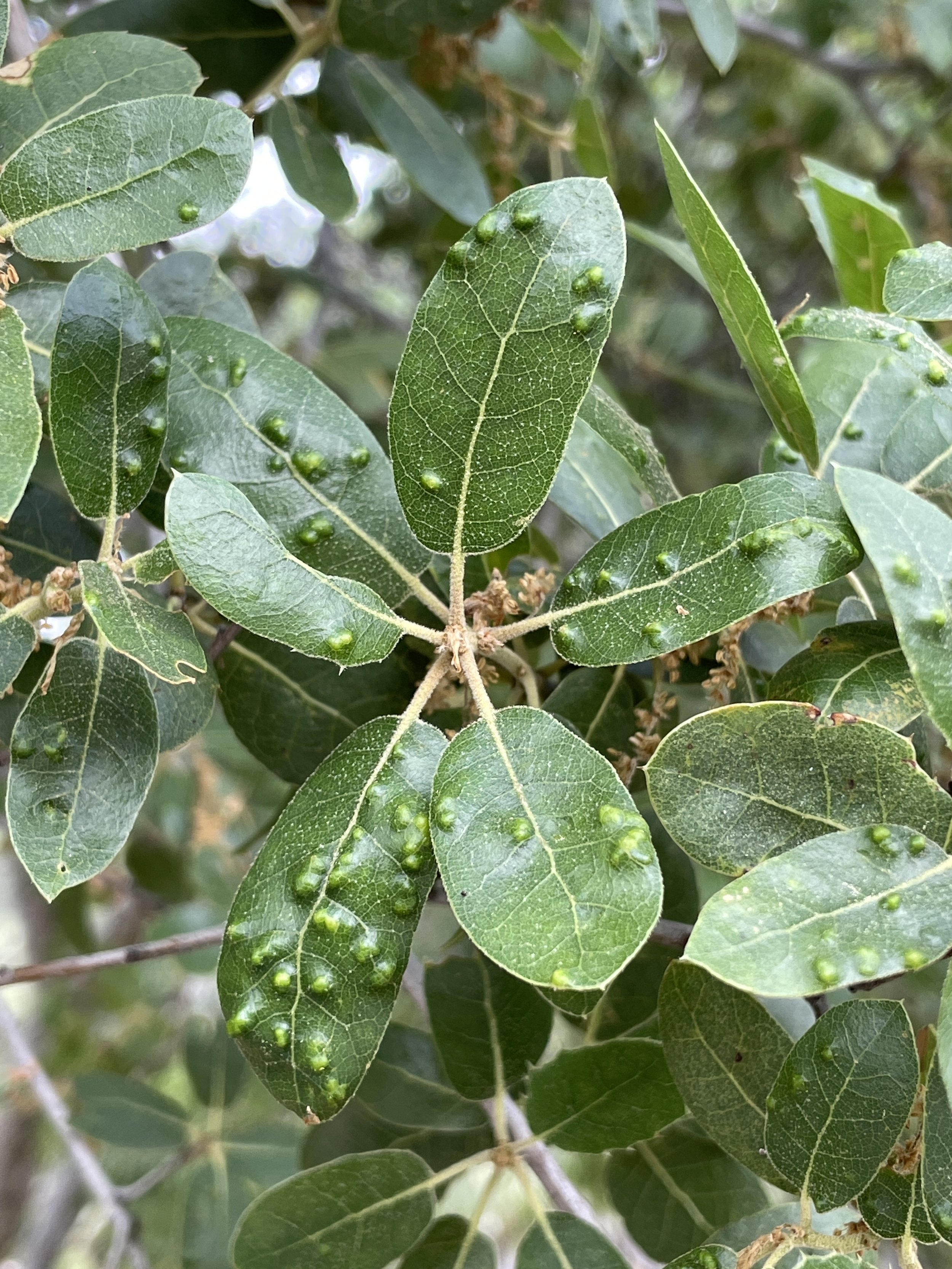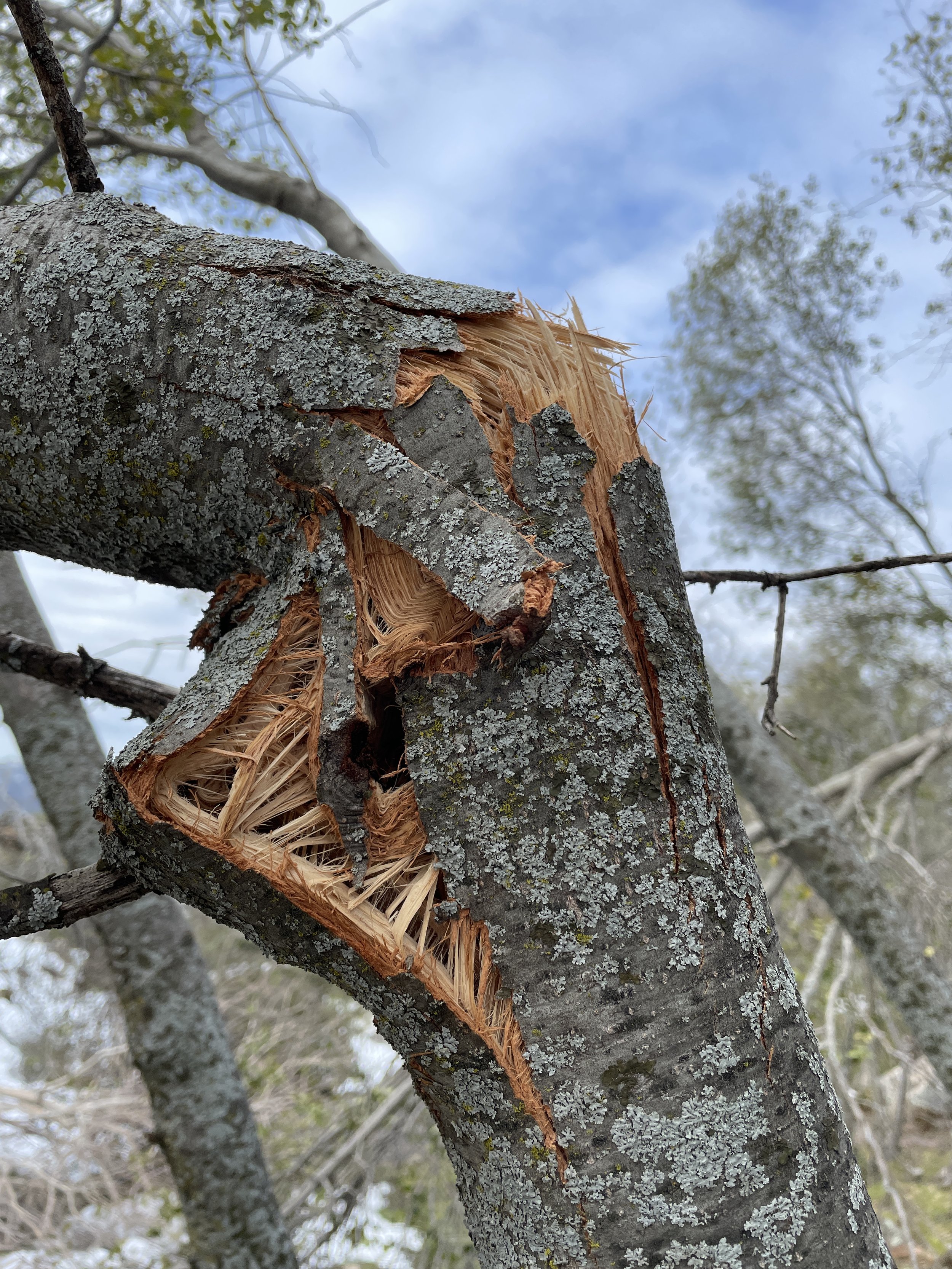
Interior Live Oak
Quercus Wislizenii
cēgēnobi
As a group, oaks are known for their ability to form hybrids, and the interior live oak is no exception. In areas where they overlap, interior live oak will produce a hybrid with black oak, commonly called “Oracle Oak.” Its leaves are two to five inches long with shallow lobes.
One might expect that the strong, heavy wood would have been used by settlers or commercially logged, but this did not occur. The tree’s long, large limbs grow out and down around the trunk making access difficult and creating knotty wood. As a result, they have large beautiful crowns.
The leaves of live oak species will often have unusual looking growths, called “galls” Over fifty kinds of insects cause galls to form on the leaves, and in the smaller branches. Their unusual shapes and colors are amazing!
Description:
Size: medium -sized tree, 30-70 feet tall.
Bark: dark gray to brown, becoming scaly with age (just like me).
Leaves: evergreen, dark green and shiny above, lighter green below, 1-2 inches, 0.5 to 1.25 inches wide; two types of leaves may be present on the same tree; some leaf margins will have smooth edges, others sharp spiny edges.
Fruit: slender acorn, .75 to 2 inches.
Other: tree is twice as broad as tall due to the long limbs that extend out from the trunk and create a dome effect.
“These are twisty creatures and like many other trees in this area, they are ‘super highways for food gathering ants’. If you cut one down a million more branches will pop up and they can grow in really funky ways as new branches will often sprout from old branches or trunks, this is called ‘epicormic sprouting’.
“Snow is the ultimate enemy of Interior Live Oak trees. We have had many big beautiful trees break branches or fall over completely when covered with snow. They do not lose their leaves in winter and the weight of the snow is often too much.”





